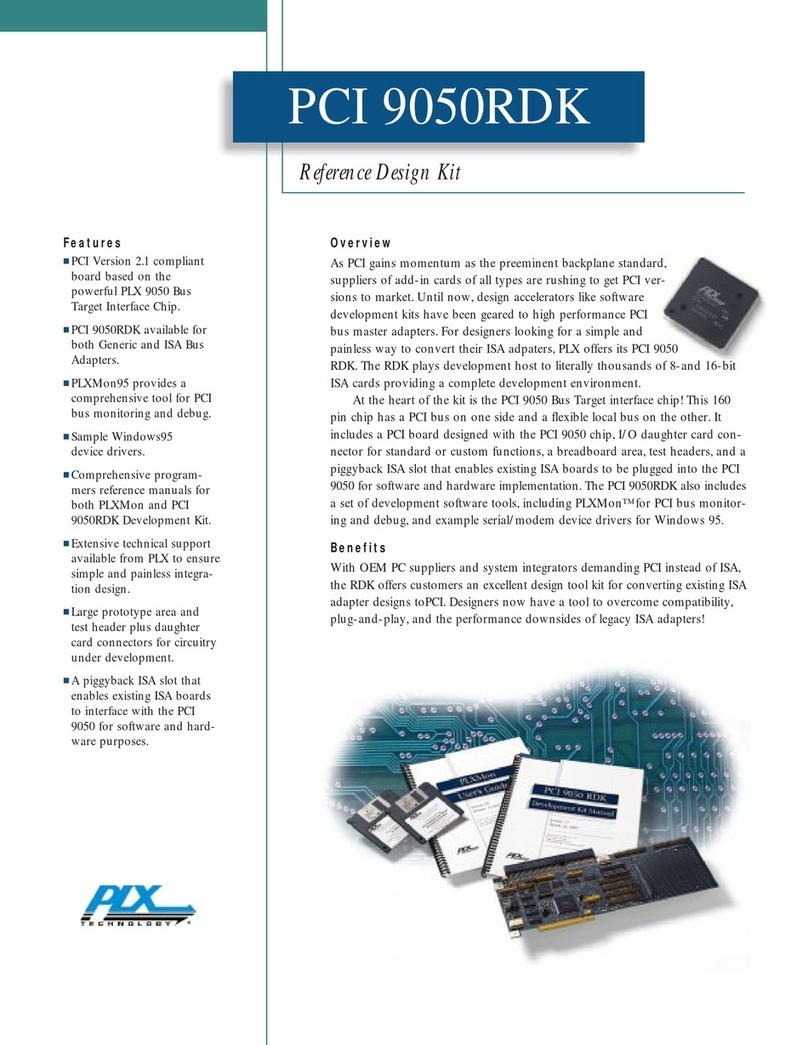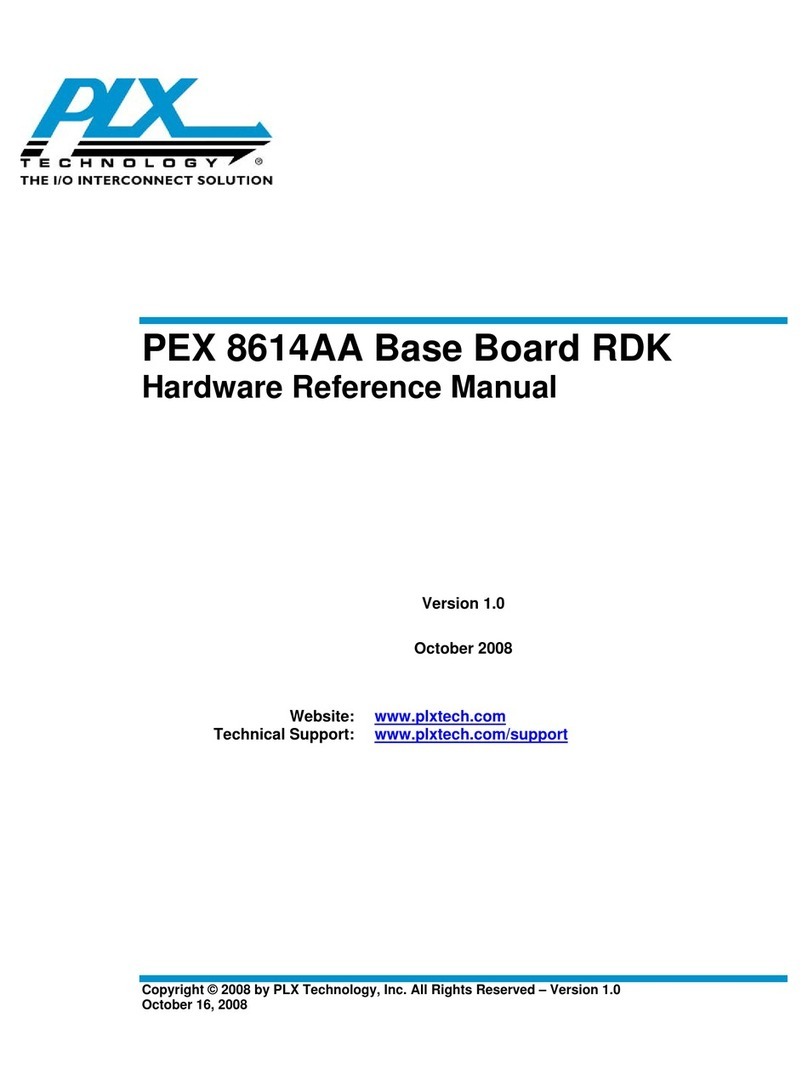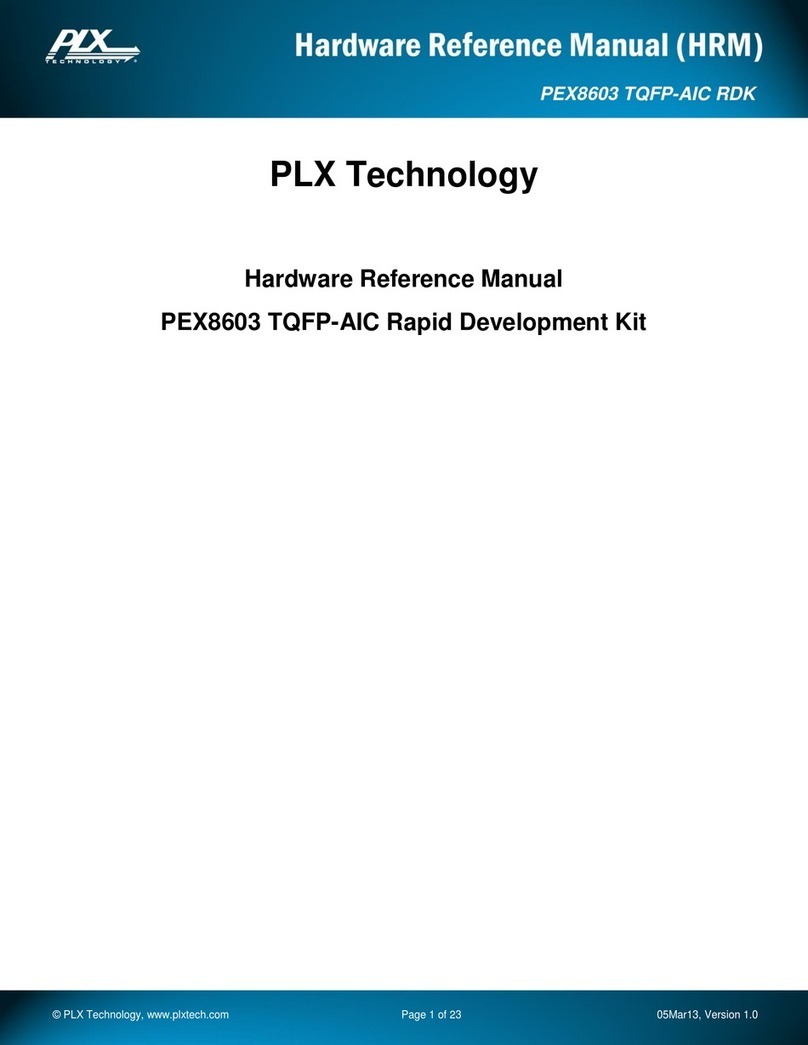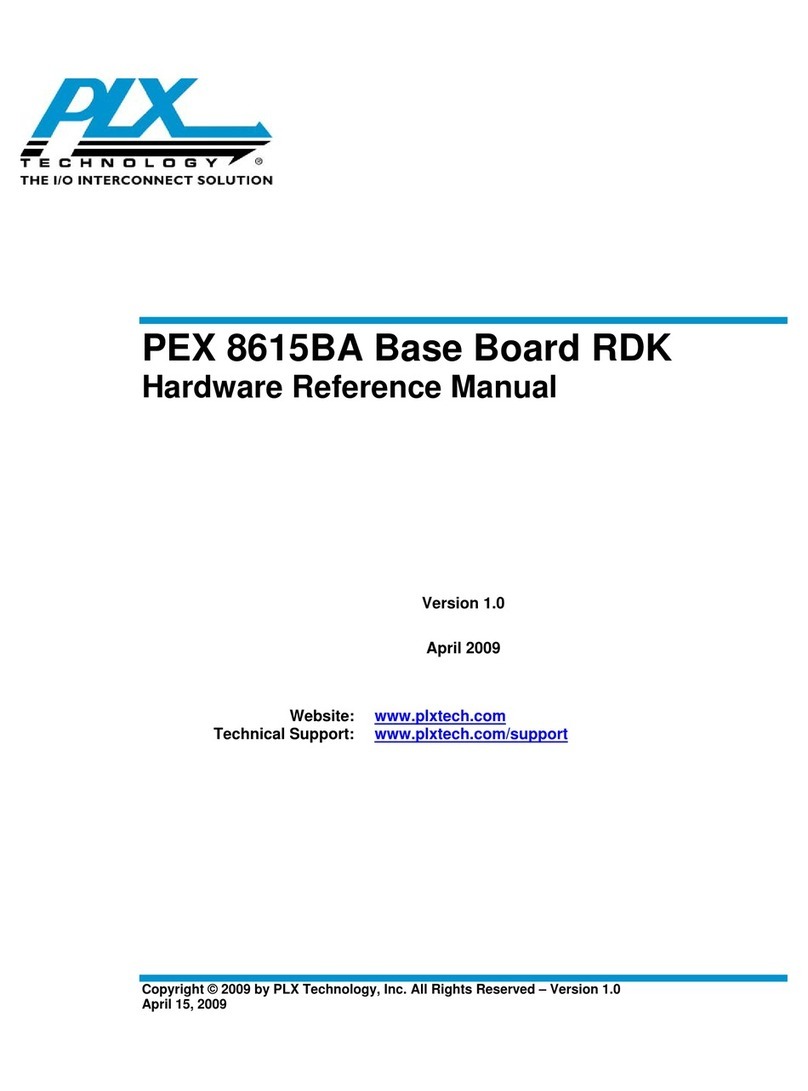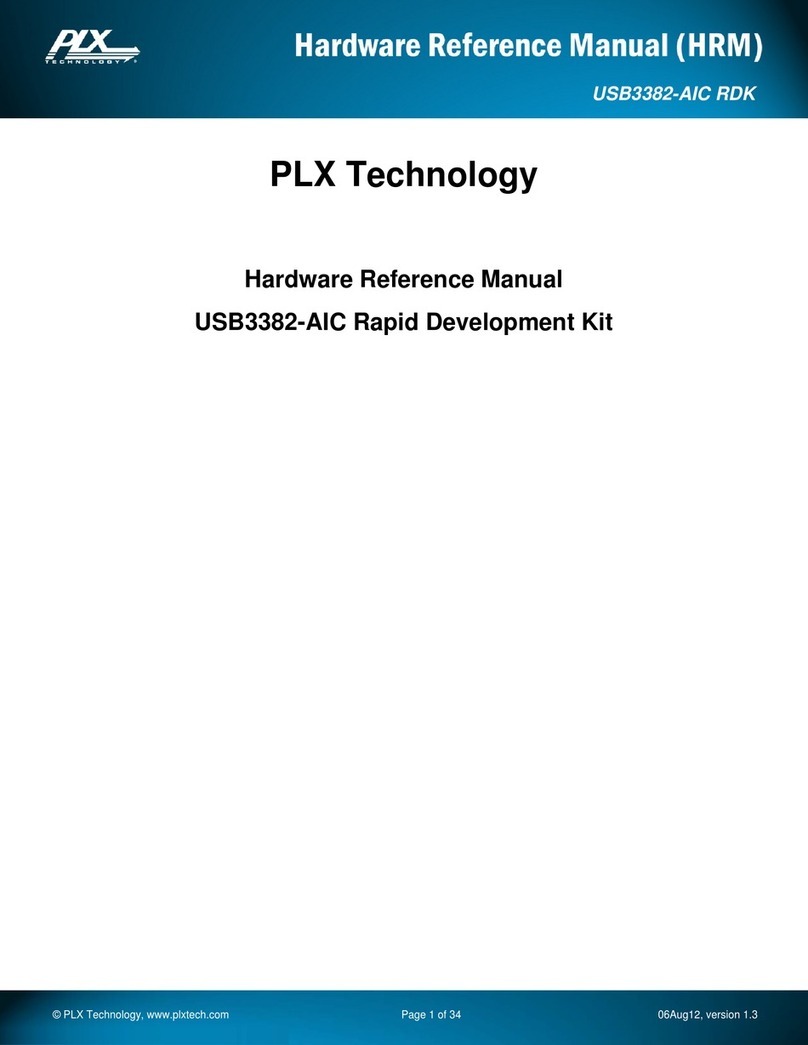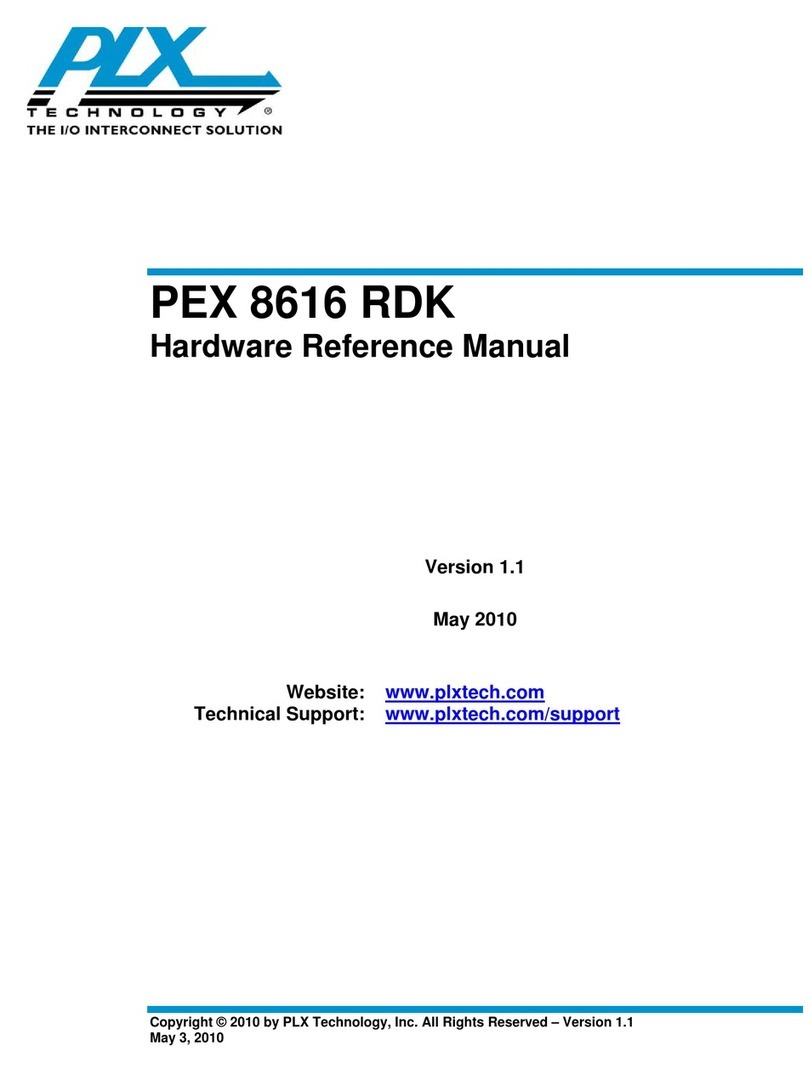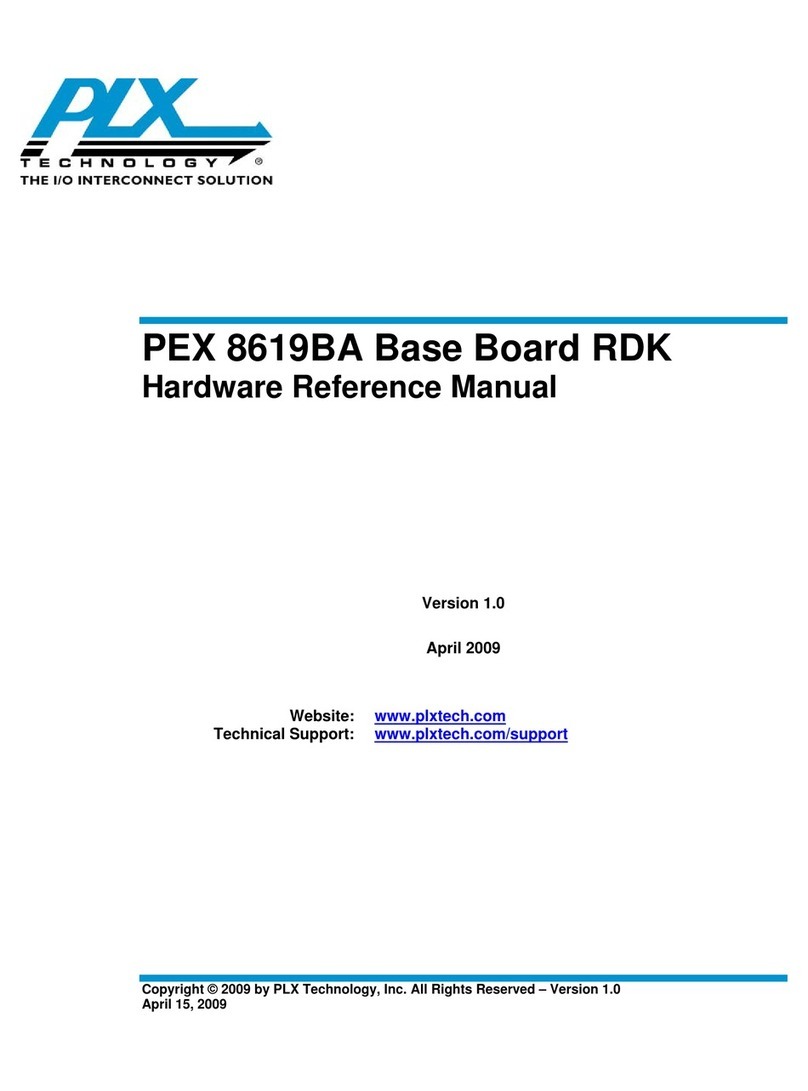
PEX 8632-AA Quick Start Hardware Design Guide, Version 1.1
© 2007 PLX Technology, Inc. All Rights Reserved. v
Contents
Preface ........................................................................................................................................................ vii
Notice ....................................................................................................................................................... vii
Revision History ....................................................................................................................................... vii
Introduction ................................................................................................................................................... 1
1Switch Interfaces.................................................................................................................................... 1
1.1 PCI Express Link Interface .............................................................................................................. 2
1.1.1 Transmitter ................................................................................................................................ 3
1.1.2 Receiver .................................................................................................................................... 5
1.1.2.1 Receiver Equalizer Registers – 8-Port Mode .................................................................. 5
1.1.2.2 Receiver Equalizer Registers – 12-Port Mode ................................................................ 5
1.1.3 Reference Clock........................................................................................................................ 6
1.1.4 Channel..................................................................................................................................... 7
1.2 NT Function ..................................................................................................................................... 8
1.3 Hot Plug Controller Interface ........................................................................................................... 9
1.4 JTAG Interface .............................................................................................................................. 11
1.5 I2C Interface ................................................................................................................................... 12
1.6 PCI Express Port Good Indicators................................................................................................. 12
1.6.1 PCI Express Port Good Indicators – 8-Port Mode .................................................................. 12
1.6.2 PCI Express Port Good Indicators – 12-Port Mode ................................................................ 12
1.7 Strapping Balls............................................................................................................................... 13
1.7.1 Strapping Balls – 8 Port Mode ................................................................................................ 13
1.7.2 Strapping Balls – 12 Port Mode .............................................................................................. 15
1.8 GPIO Balls..................................................................................................................................... 16
1.8.1 GPIO Balls – 8-Port Mode ...................................................................................................... 16
1.8.2 GPIO Balls – 12-Port Mode .................................................................................................... 16
1.9 Power Supplies, Sequencing, and De-Coupling ........................................................................... 17
1.9.1 Power Supplies ....................................................................................................................... 17
1.9.2 Power Sequencing .................................................................................................................. 18
1.9.3 Board-Level De-Coupling........................................................................................................ 19
2PCB Layout and Layer Stackup Considerations.................................................................................. 21
2.1 BGA Routing Escape and De-Coupling Capacitor Placement...................................................... 21
2.2 Add-In Board Routing .................................................................................................................... 23
2.3 System Board Routing................................................................................................................... 23
2.4 Midbus Routing.............................................................................................................................. 24
2.5 PCB Layer Stackup Considerations .............................................................................................. 24
3References........................................................................................................................................... 25
